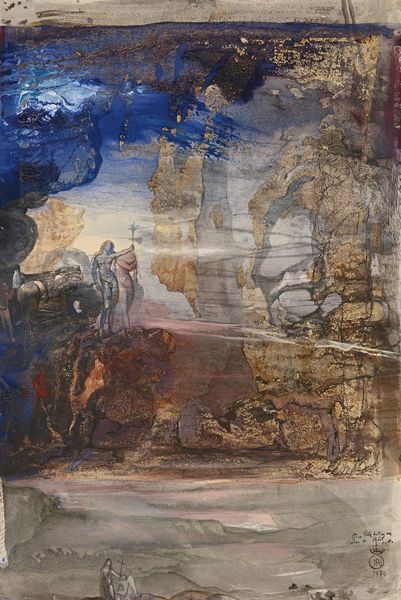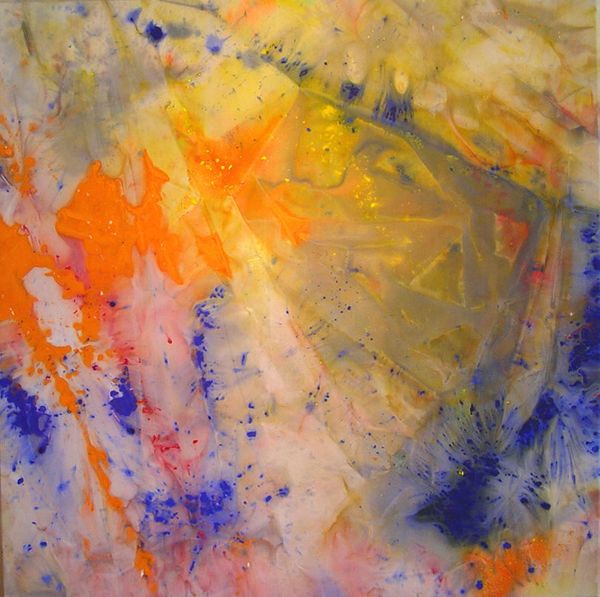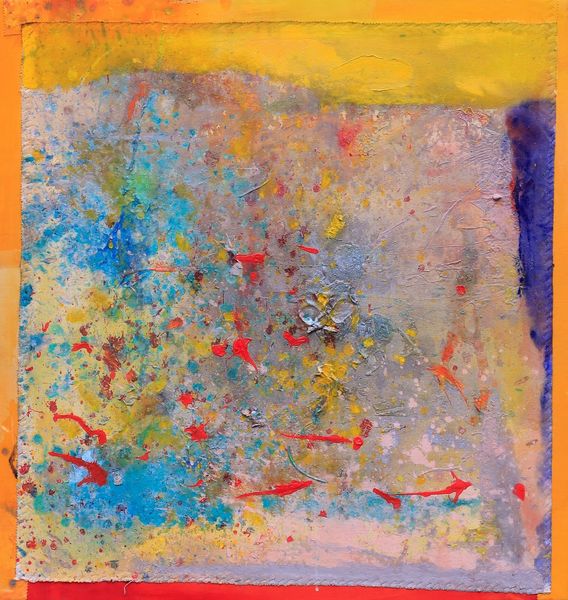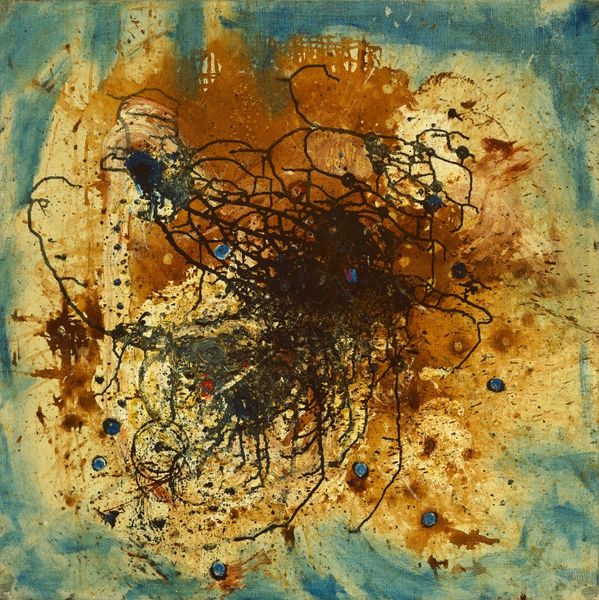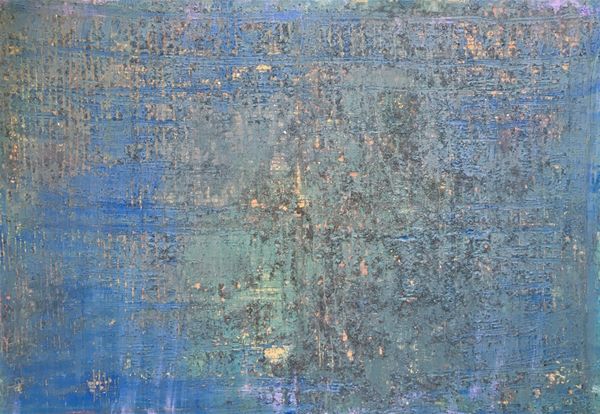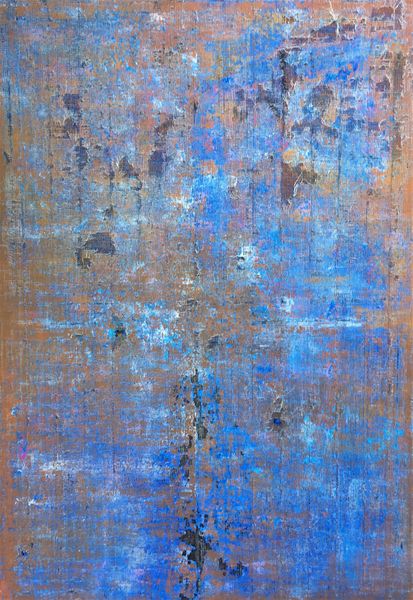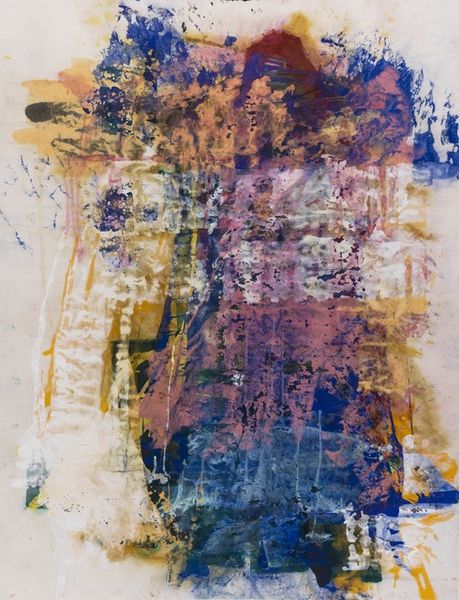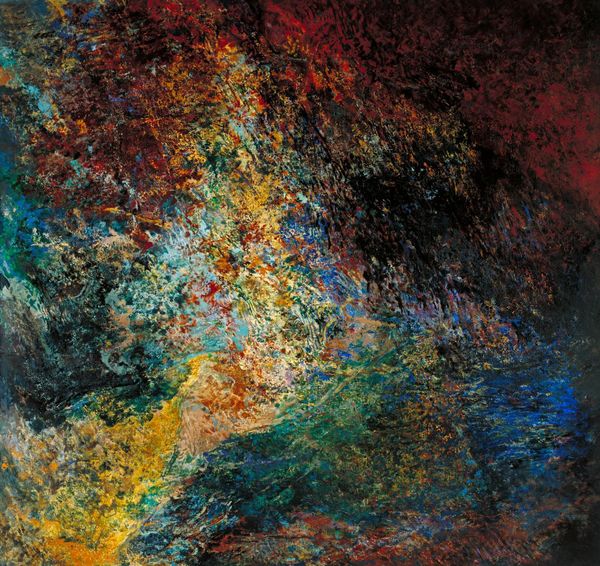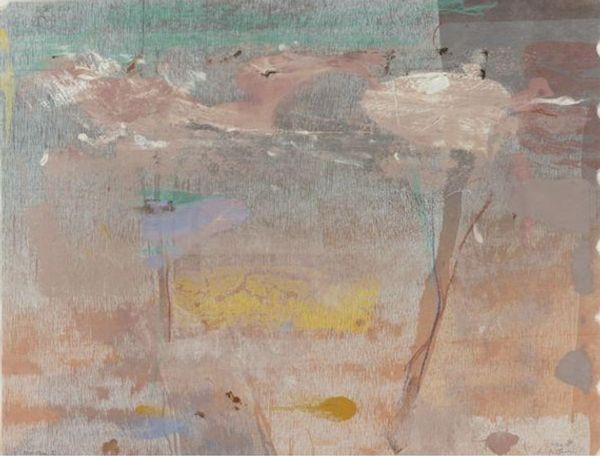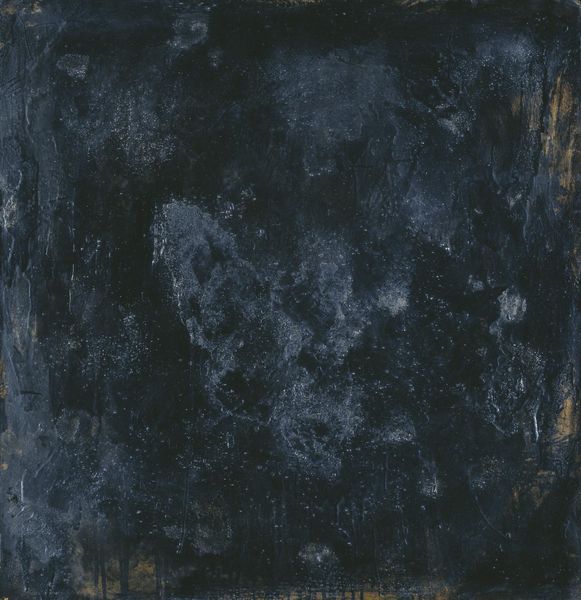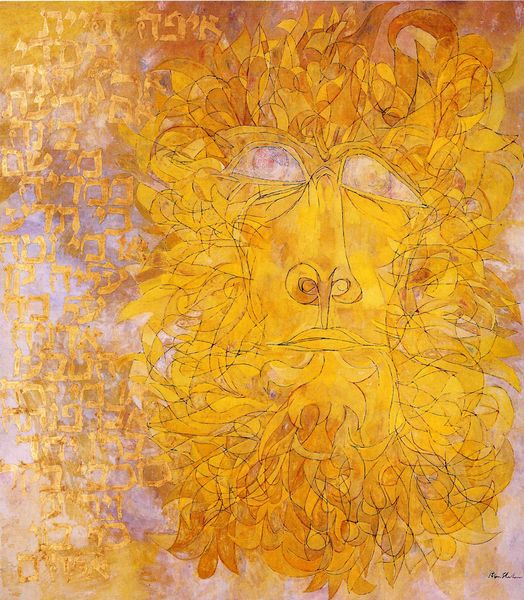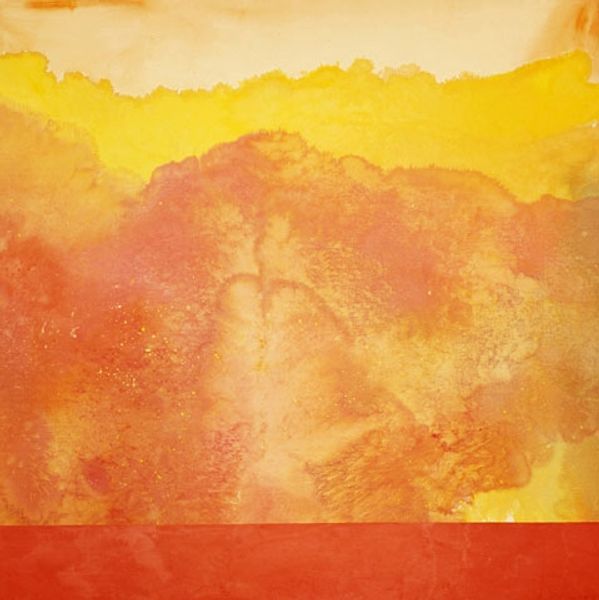
Copyright: Constantin Flondor,Fair Use
Editor: We’re looking at Constantin Flondor's "Sky (Ravenna)," a watercolor painting from 1995. The blending of soft blues and yellows gives it this dreamy, ethereal quality, almost like looking through a hazy memory. How do you interpret this work, especially given its title? Curator: It's interesting that you mention the 'dreamy' quality. Considering the socio-political context of 1990s Romania, where Flondor was working after decades of communist rule, this dreaminess can be seen as a form of escapism, perhaps even a subtle act of resistance. The title links it to Ravenna, Italy, famous for its Byzantine mosaics. Why Ravenna? What does that specific cultural reference bring to mind, given the political landscape he comes from? Editor: I hadn’t considered the political aspect. So, the allusion to Ravenna and its history becomes important…almost like a longing for a connection to a wider European identity beyond Soviet influence? Curator: Precisely. It brings in themes of cultural identity, history, and perhaps a subtle critique of the imposed isolation. Flondor, part of the Prolog Group, emphasized spirituality and artistic freedom. Think about the symbolism of the sky itself – vast, unbounded, a space of potential. Editor: So, the abstraction isn’t just aesthetic, it's a way of encoding meaning…a visual language that speaks to liberation and reconnecting with a suppressed heritage? Curator: Exactly! Abstraction becomes a powerful tool. The way the watercolors blend and bleed could also be seen as symbolic, the dissolution of old boundaries, the blurring of imposed ideologies. It is so interesting how artists navigated very restricted and oppressive moments in the past. Editor: That gives me a completely different way of viewing the piece, recognizing that the "dreamy" feel has real roots in socio-political struggle. Curator: Art often speaks volumes beyond what’s immediately visible, reflecting both personal and collective experiences. Editor: I learned to look for those layers and understand how history shapes artistic expression, thank you!
Comments
No comments
Be the first to comment and join the conversation on the ultimate creative platform.
